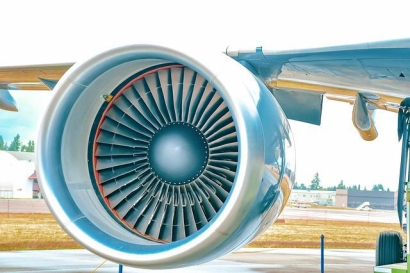
Feedstocks include but are not limited to corn grain, oil seeds, algae, fats, oils, greases, agricultural residues, forestry residues, wood mill waster, municipal solid waste streams and alcohol.
Alcohol to Jet (ATJ) is one of the main processes to produce sustainable aviation fuels. AtJ process can use alcohols such as Ethanol, Propanol, and Butanol. Ethanol is the preferred feedstock due to its low cost and wide global availability. Ethanol goes through a series of four steps to be converted into SAF.
SAF is generated using feedstocks that can be grown or produced without risk of unforeseen environmental and social effects, and it has much lower lifecycle emissions than traditional jet fuels
Compared to jet fuels, SAF has the potential to lower emissions by up to 80% over its lifecycle. It is also intended to be a "drop-in" replacement for conventional turbine engines that use fossil-based jet fuel. However, in order for SAF to attain its full potential, utilization must increase dramatically.
Today, the SAF turbine faces two major barriers to wider adoption: production and cost. No single feedstock or production pathway will be practical in every geography or yield enough SAF to meet all demand. Specific regions are better suited for alternate production pathways and feedstocks that are yet to take off. While there are currently nine production methods to create SAF, setting up plants with new technology can take years to meet consumer’s demands.
The generally low supply and high demand also play into the second major obstacle of price. Today, SAF costs around three times as much as conventional jet fuel. The price premium leaves many airlines reluctant to invest significantly and lock in long-term contracts. Meanwhile, producers have yet to see substantial demand signals in the market to qualify significant investment in generating more supply.
According to the International Air Transport Association (IATA), SAF supply must increase from approximately 20.5 million liters to at least 449 billion liters per year by 2050 for the aviation industry to meet its net-zero goal. Scaling up SAF necessitates two direct business actions: collaboration and SAF certificate purchases.
We are already seeing successful SAF cooperation and partnerships, but there is no established market for obtaining SAF. There isn’t an agreed-upon mechanism for reporting SAF-related emission reductions in a transparent and accurate manner. This may cause some businesses to be worried about accurately reporting their carbon emissions.
The SAF Framework, released by the Smart Freight Centre (SFC), is one set of principles that helps organizations when initially getting SAF Certificates. This framework, which addresses both cargo and business travel, is the first step in establishing a structured book-and-claim system. As more SAF Certificates are purchased by businesses, the market will build a mature book-and-claim mechanism.
Today, we are finding that the United States is approaching a tipping point in SAF capacity deployment which is enabling significant growth opportunities to meet existing and future demand for SAF. Just after the publication of the ReFuelEU Aviation proposal by the European Commission came a proposal for a UK SAF mandate.
The US launched the “SAF Grand Challenge”, the result of the U.S. Department of Energy (DOE), the U.S. Department of Transportation (DOT), the U.S. Department of Agriculture (USDA), and other federal government agencies working together to develop a comprehensive strategy for scaling up new technologies to produce sustainable aviation fuels (SAF) on a commercial scale. These initiatives mark important steps towards further growing the global SAF market.
Assuming that the diesel facilities start manufacturing SAF, Europe is expected to meet its demands by 2027. Europe might also have to rely on imports of SAF. For long term needs of SAF, Europe might have to build 200+ facilities to meet their demand. Most of these would rely on non-ethanol technologies.
The current demand of SAF in the US can be met with the existing feedstock available. This feedstock can help run around 250 facilities to produce 18 billion gallons of SAF. If the SAF demand were to go up to 2020 levels and continues to grow till 2050, then US would need to produce 27 billion gallons of SAF and alternate energy sources of SAF would have to be explored. To address this different feedstock supply chains would need to be developed. Some alternate mechanisms could be as below.
In 2022, we now have significant global awareness of greenhouse gas emissions and their adverse impact on our environment. Great scientific breakthroughs and engineering advancements have been made in the field of sustainable fuels. The Inflation Reduction Act of 2022 includes various incentives for SAF research and production. While a lot more still needs to be done, with increased cooperation between the scientific community, aviation industry and governments, the goal of achieving net zero to combat the climate crisis is within reach.
About the Author: Anika Arora, a high school student, recently finished a summer internship at Petron Scientech, a Princeton NJ, based biofuels company.
To show her commitment to making a difference in the environment, Anika and her sister Divya have taken on several sustainability initiatives. All their work can be found under https://simply-green.org and their social media account #_simply.green_.

